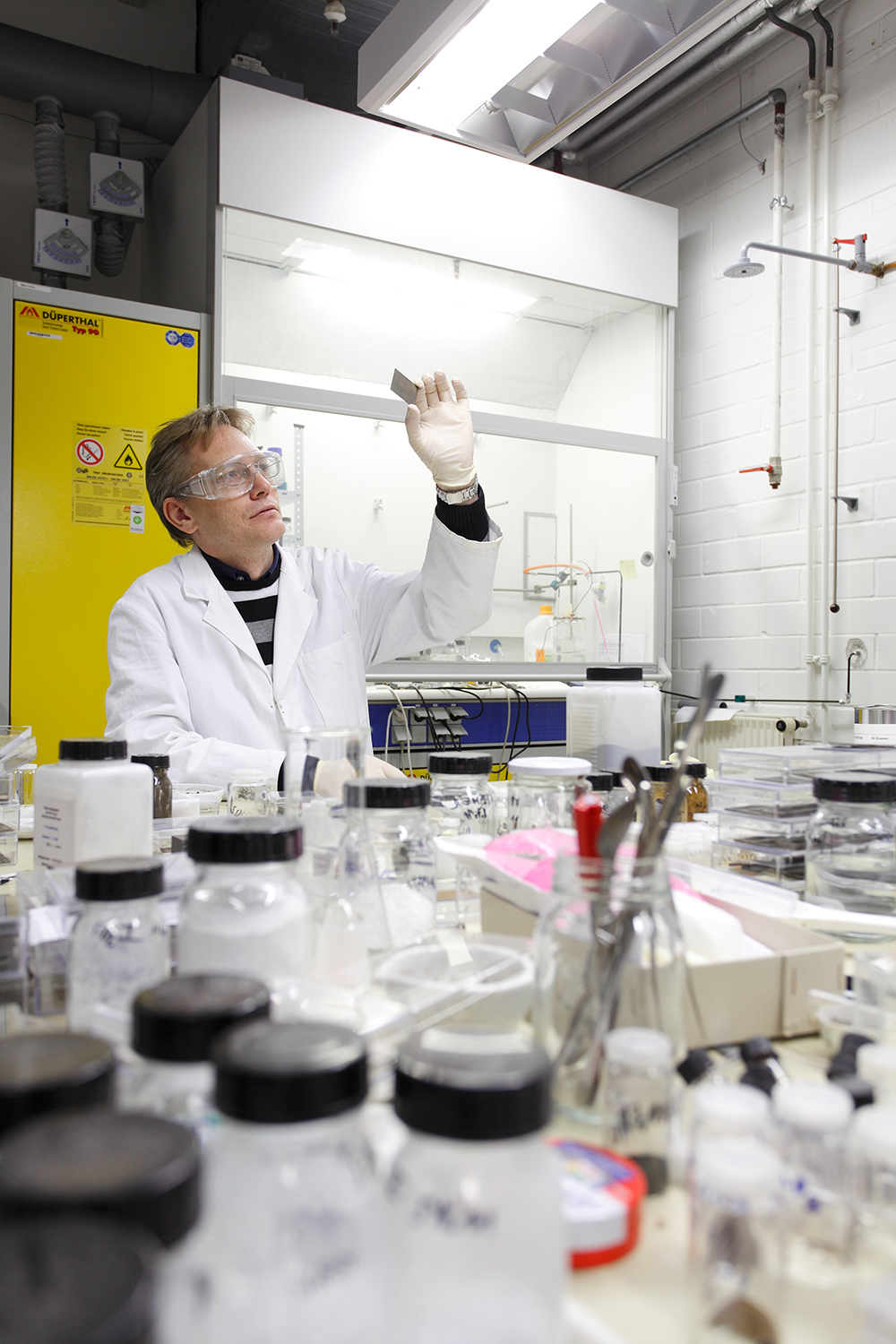Increasing the conversion and selectivity in chemical reactions

In catalyzed reactions, product formation takes place in the presence of a substance, which, although significantly participating in the reaction by forming an intermediate transition state, ultimately comes out of it unchanged. It is a characteristic feature of this transition state that a lower activation enthalpy is required in comparison to the catalyst-free transition state. It might be the associated increase in the reaction rate, which allows noteworthy conversions of reactants or which takes the selectivity of the reaction in the desired direction. In heterogeneous catalysis, the catalyst is mostly present in solid form and the reactants are supplied either in gaseous or liquid form to pass the catalyst. If the catalyst and at least one of the reactants are in the same phase, this is referred to as a homogenous catalysis.
For the heterogeneous gas-phase catalysis, our current focus is on the following reactions:
- Generation of hydrogen by reforming hydrocarbons (such as methane, biogas, propane, butane, diesel, kerosene) and alcohols (such as methanol, ethanol, polyalcohol),
- production of hydrogen by partial oxidation of propane and biogas,
- hydrogen purification, that means depletion of carbon monoxide using the water-gas shift reaction and the selective oxidation of carbon monoxide,
- catalytic combustion of volatile organic compounds (VOC) in exhaust gases and purification of exhaust gas streams containing hydrocarbons, carbon monoxide or hydrogen,
- catalytic combustion for the internal heating of plate heat exchangers,
- methanol synthesis from synthesis gas,
- conversion of methanol to gasoline (methanol-to-gasoline, MTG),
- conversion of synthesis gas to synthetic fuels (Fischer-Tropsch synthesis),
- conversion of carbon dioxide to methane (power-to-gas).
Examples of heterogeneous liquid phase catalysis and multiphase catalysis are:
- Production of biodiesel (single-phase),
- Suzuki-coupling reactions (single-phase or two-phase),
- selective hydrogenation of carbon-carbon triple bonds (gas/liquid),
- hydrogenation of nitro groups (gas/liquid).
Amongst others, we have already tested the following homogeneously catalyzed reaction systems:
- Oxidation reactions, e.g. octanal to octanoic acid with manganese acetate as catalyst,
- esterification,
- enzymatic oxidation of glucose,
- photo catalysis such as the photo oxidation of dihydroxynaphthalene to juglone.
 Fraunhofer Institute for Microengineering and Microsystems IMM
Fraunhofer Institute for Microengineering and Microsystems IMM